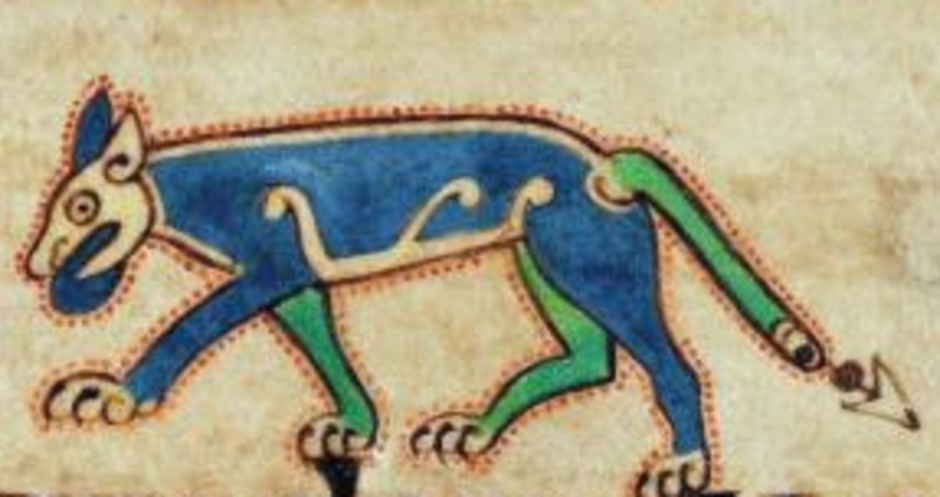
The Role of Mothers in Ancient Gaelic Society - the Story of Áine
Is it possible that, in the Celtic worldview, stories about warrior-women like Scáthach and Boudica were closely linked to the Celtic concept of motherhood? Or were a subset of stories and expectations related to mothers? Just how far would Celtic mothers go, or were expected to go, to protect their children? To help begin to frame answers to some of these questions, this article examines the story of "Labhraidh's mother" in the saga called "Orgain Dind Rig / The Destruction of Dind Rig".
The Mother of Labhraidh Loingseach
The story of Labhraidh's mother comes down to us in the tale called "The Destruction of Dind Righ" in the Book of Leinster. In it, she is called simply ‘’the mother of Labhraidh’’. From other sources, we know that her name was ‘Áine’. It’s possible that this story was first told as a myth about some of the ancient gods of Ireland. Perhaps Labhraidh, in the original myth, was the great divine ancestor of the Laighin and the goddess Áine was his mother. If so, the story was changed in the early Christian period so that it claims now, as it comes down to us from the 8th century, that the characters in it were humans rather than divine beings.
The Story
The story begins when Labhraidh is a little boy. Labhraidh’s father is Ailill Áine, prince of Leinster. The father of Ailill Áine and grandfather of Labhraidh is Lóegaire Lorc, High-King of Ireland. Lóegaire Lorc had a brother, i.e., Cobhthach Caol, a very jealous and deceitful man who pretended that he was dying in order to lure his brother Lóegaire Lorc into a trap. Out of love and pity, Lóegaire came to say goodbye to Cobhthach, but Cobhthach stabbed him with a knife and he died.
Then, Cobhthach poisoned Labhraidh’s father to kill him, he terrfied the other righ-damhna (i.e., the others who had the right to compete for election as High-King), and he took the High-Kingship. Labhraidh’s mother wasn’t able to protect her son after the murder of her husband. Cobhthach could do anything he wanted to her son. Cobhthach made Labhraidh eat pieces of the hearts of his father and grandfather, and that left Labhraidh mute for years. In this period, although he was mute, Labhraidh did wonderfully in his studies and he earned the nickname ‘Mute Ollamh’. In time, he started to talk again.
However, as Labhraidh grew up, Cobhthach Caol came to look on Labhraidh as a potential enemy. Labhraidh and his mother understood this, Labhraidh gathered a small band of his friends, he went into exile, he won allies in another country, he came back to Leinster with an army, and he easily took by battle and draíocht the capitol of Leinster, i.e., Dinn Righ. That frightened Cobhthach Caol. Then, home with his mother and to wreak vengeance on Cobhthach, Labhraidh decided to use his grand-uncle’s own favorite weapon – deceit. Labhraidh sent word to Cobhthach Caol that he wanted peace and that he would be completely satisfied with the Kingship of Leinster, and no more. Cobhthach welcomed this message. Therefore, Labhraidh invited Cobhthach to come to a great feast at Dinn Righ to certify and celebrate their agreement.
Cobhthach came because he wanted peace, but he was very suspicious. To protect himself, he brought allies with him, 30 kings and 700 warriors, each one of them fully-armed. When he reached Dinn Righ, he was amazed. Labhraidh had a huge, newly-built meadhall, and it was a technological wonder. The whole building was made of iron! But when Labhraidh invited Cobhthach to go in, Cobhthach refused. Instead, Cobhthach sent in his allies. Nothing happened. They were safe. But Labhraidh and his mother saw that Cobhthach was still worried. At that point, seeing that her son’s plan was about to fall apart, Labhraidh’s mother walked into the hall to show Cobhthach that there wasn’t any danger. Cobhthach followed her in, thinking at last that he was safe.. Immediately, as planned, Labhraidh’s followers slammed shut the doors of the iron hall and began to lay wood on its sides in order to make a great fire. The mead-hall was a huge oven and Labhraidh’s plan was to roast Cobhthach alive!
But Labhraidh never imagined that his own mother would be inside with Cobhthach. He didn’t know what to do. His followers begged him three times to light the fire, but he refused three times. At last, his own mother encouraged him to light the fire with this: “I am dead anyway. Regain your honor through me.”
And that’s the way, through the self-sacrifice of his mother, that Labhraidh took vengeance upon Cobhthach and became the High-King of Ireland.
To Conclude
Did our Celtic ancestors have a concept similar to that of the Chinese 'Tiger-Mother'? We should remember that famous Celtic warrior-women like Scáthach and Boudica were also mothers. Furthermore, it appears that our ancestors understood well that there are more ways for a woman to fight than with spear, sword, shield, and chariot, and that mothers are sometimes the best-motivated to resort to such alternative means. Like Áine.
Copyright © 2015 by Gerald A. John Kelly
All Rights Reserved - No Reproduction Without Written Permission of the Author

